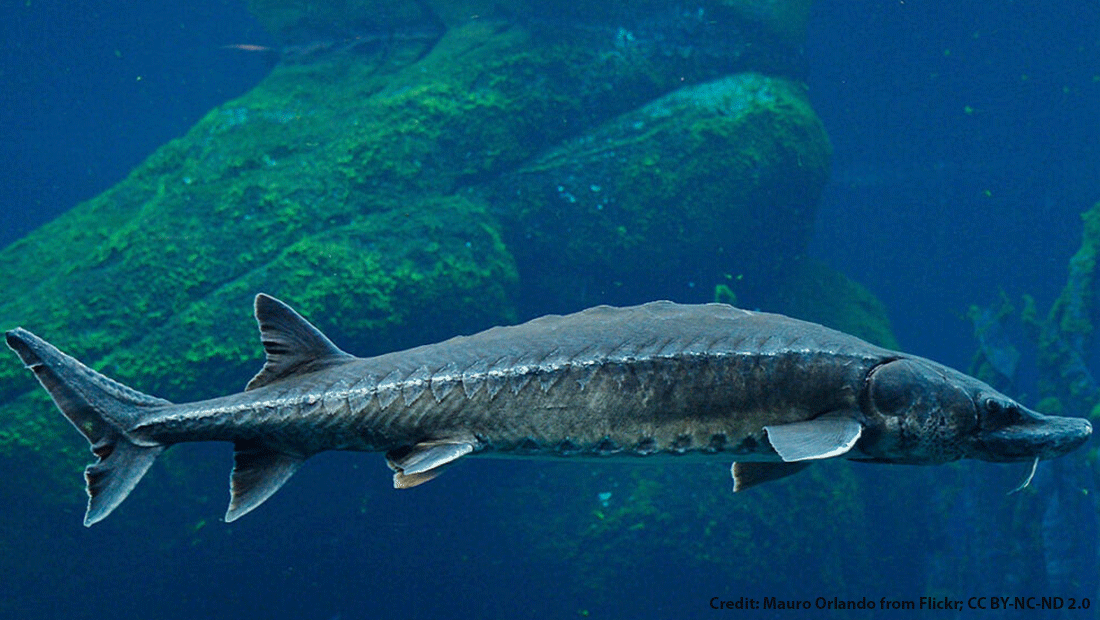
10 Mar Gear Modifications to Reduce Atlantic Sturgeon Bycatch in the Monkfish Gillnet Industry – NWWN 2023 Internship Highlights
Written by the Daniel Millea at the University of Delaware
I began my internship with the National Working Waterfront Network this February (2023) while working on my Ph.D. at the University of Delaware. During this time, our Atlantic sturgeon bycatch reduction project was still in the early phases. The overall summary of the project is to develop a modified gillnet design to reduce Atlantic sturgeon bycatch and mortality within the Northeast and Mid-Atlantic monkfish gillnet industry. The project is headed by Dr. Dewayne Fox from Delaware State University and Dr. Edward Hale from the University of Delaware.
Atlantic sturgeon are an anadromous fish species ranging from the St. Lawrence River, Canada to Cape Canaveral, Florida. Their lineage dates to the upper Cretaceous period 280-350 million years ago, categorizing the species as a “living fossil”. They are typically a demersal species spending most of their time foraging for food along the substrate. They migrate annually from the continental shelf into river systems to reproduce. They are classified as endangered across most of their range and threatened in select populations (Gulf of Maine and St. Lawrence populations).
The species was severely overfished during the height of the sturgeon fishing industry in the late 19th century, harvested for caviar and flesh. Since the U.S. fisheries closure in 1997, the main source of mortality for the species is through commercial fishing bycatch. Bycatch is observed in both trawl and gillnet fisheries; however, mortality is highest within the sink gillnet fisheries targeting groundfish. Other sources of mortality include vessel strikes, pollution, and loss of habitat due to annual dredging and damming.
At this stage of the project, the modified nets are under construction and being prepared for distribution to our community partners, which include commercial fishers within the monkfish gillnet industry. This past month, I have been conducting the preliminary research needed for the project and have completed a literature review on Atlantic sturgeon and the monkfish gillnet industry. While researching, I was provided with a wealth of knowledge about the Atlantic sturgeon fishery during its peak in the late 19th century. Through numerous first-hand accounts of the fishery, data portrayed the rapidly declining population numbers on a year-to-year basis. What I found most interesting was on occasion, Atlantic sturgeon caviar lacked pigment, possessing a white creamy coloration rather than the usual brown/black coloration. In cases such as these, both the caviar and the fish were discarded because the “white roe” would not sell at market. The literature review will serve as the first chapter of my dissertation.
I have also been tasked with developing a questionnaire to distribute to our commercial partners. Within this questionnaire, fishers will record general parameters on the gear they are using, species they caught, as well as environmental conditions. During each trip, fishers will use two standard industry nets and two modified nets. The questionnaire will provide us with general data and user comments on both standard industry gillnet as well as the modified gillnet providing a comparison between the two. This questionnaire will be completed during every trip the modified gillnets are used during the study period. We are planning to distribute the nets to our commercial partners for use within the next few weeks.
If you have any questions regarding this research please email Daniel directly at dmillea@udel.edu.

